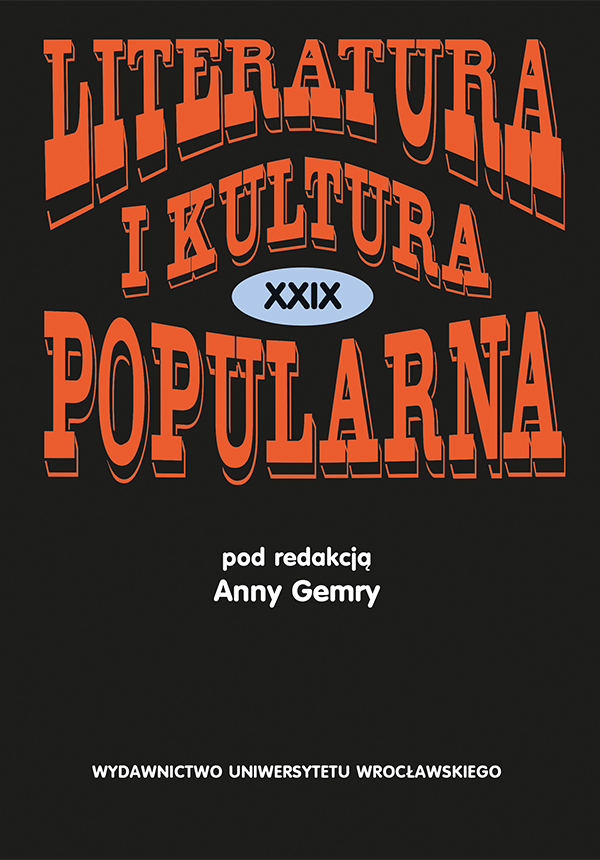

Articles

Although Fergus Hume’s The Mystery of a Hansom Cab (1886) is a continuation of the convention of the English sensational fiction, popular in the 1860s and 1870s, one can notice there patterns which will later be typical of detective literature. While the reader of a sensational novel was not ‘invited’ to solve the detective puzzle (provided there is any) by himself/herself and so to act as a rival of the fictional detective, in Hume’s text the way in which the narrative discourse is carried provokes the reader to speculate on the motive of the murder and the perpetrator. The reader is thus presented with the data allowing him/her to draw conclusions on his own, independently from the detective, although he/she is sometimes put on a wrong track. Thus on the one hand the reader is offered an opportunity to ‘enter’ the presented reality and follow the sensational course of events as they ‘happen,’ on the other this reality is revealed as a construction subordinated to particular laws and principles — the tale is a puzzle containing clues necessary to solve it, while the reader’s role is to link the seemingly unconnected elements into one logical whole.
Doyle A.C., Studium w szkarłacie, przeł. T. Evert, Prószyński i S-ka, Warszawa 1997.
Hume F.W., The Mystery of a Hansom Cab, Rand, McNally & Company Publishers, Chicago-New York [b.r.w.].
Hume F., Tajemnica dorożki, przeł. J.S. Zaus, Wydawnictwo MG, [b.m.w.] 2019.
Le Queux W., The Mystery of the Green Ray, Hodder and Stoughton, London-New York-Toronto 1915.
Reade Ch., Hard Cash: A Matter-of-Fact Romance, Bernhard Tauchnitz, Leipzig 1864.
Brantlinger P., What Is “Sensational” about the “Sensational Novel”?, „Nineteenth-Century Fiction” 37, 1982, nr 1, s. 1–28.
Clarke C., Late Victorian Crime Fiction in the Shadows of Sherlock Holmes, Palgrave Macmillan, Basingstoke 2014.
Eliot T.S., Wilkie Collins and Dickens, [w:] T.S. Eliot, Selected Essays 1917–1930, Faber and Faber Limited, London 1932, s. 408–412.
Fantina R., Victorian Sensational Fiction: The Daring Work of Charles Reade, Palgrave Macmillan, Basingstoke 2010.
Frierson W., The English Novel in Transition: 1885–1940, Cooper Square Publishers Inc., New York 1965.
Graham K., English Criticism of the Novel: 1865–1900, At the Clarendon Press, Oxford 1966.
Haycraft H., Murder for Pleasure: Life and Times of the Detective Story, D. Appleton Century Company, New York-London 1941.
Hughes W., The Maniac in the Cellar: Sensation Novel of the 1860’s, Princeton University Press, Princeton 1980.
Kipperman M., White Settler/Big City: Mimicry and the Metropolis in Fergus Hume’s “The Mystery of a Hansom Cab”, „Antipodes” 22, 2008, nr 2, s. 129–136.
Knight S., Crime Fiction 1800–1914: Detection, Death, Diversity, Palgrave Macmillan, Basingstoke 2004.
Knight S., Radical Thrillers, [w:] Watching the Detectives: Essays on Crime Fiction, red. I.A. Bell, G. Daldry, Macmillan, Basingstoke 1990, s. 172–188.
Panek L., Watteau’s Shepherds: The Detective Novel in Britain, 1914–1940, Bowling Green University Popular Press, Bowling Green, OH 1979.
Pittard Ch., From Sensation to the “Strand”, [w:] A Companion to Crime Fiction, red. Ch.J. Rzepka, L. Horsley, Wiley-Blackwell, Chichester 2010, s. 105–116.
Pittard Ch., The Real Sensation of 1887: Fergus Hume and “The Mystery of a Hansom Cab”, „Clues” 26, 2007, nr 1, s. 37–48.
Pykett L., The Sensation Legacy, [w:] The Cambridge Companion to Sensation Fiction, red. A. Mangham, Cambridge University Press, Cambridge, MA 2013, s. 210–223.
Symons J., Bloody Murder: From the Detective Story to the Crime Novel. A History, Penguin Books, Harmondsworth 1985.
Zgorzelski A., System i funkcja. Ustalenia metodologiczne i propozycje teoretycznoliterackie, Wydawnictwo Gdańskie, Gdańsk 1999.
Hume F., The Mystery of a Hansom Cab, Project Gutenberg, https://www.gutenberg.org/ebooks/4223.